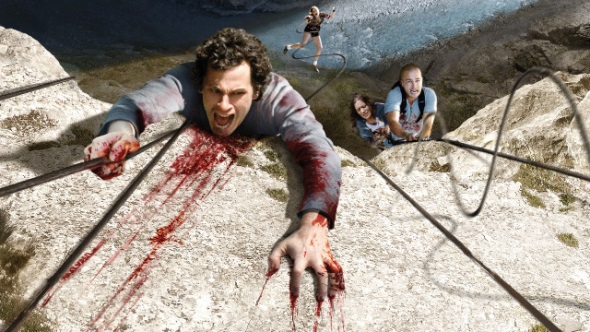The Top 10 Mountain Climbing Film Clichés You Should Never Use

I recently had the opportunity to watch the 89 films for the 2013 Banff Mountain Film and Book Festival back to back with my fellow jury members. I was with a team of experts, our butts and eyes were challenged watching eight hours of films per day with only coffee and chocolate to sustain us, and our discussions were insightful and enlightening.
As the week went on, we started to notice some common themes and images that kept coming up. So here’s my top 10 list of clichés and trends in adventure and climbing films: use these techniques carefully, use them sparingly, or avoid them at all costs.
- Opening with the sound of water, bringing in the piano music, then white text on a black title card: cliché and predictable. Try something new.
- Use of voiceover narration to create artificial tension. There were too many descriptions of all the ways you could die. This is a movie, not a lecture. If we can’t see it in the footage, you need to recut. VO gives insights into inner thoughts or events happening elsewhere that impact your subject and story. Avoid end-to-end narration, or save it for your slideshow.
- “I hurt my mom and friends!” There are too many scenes where the athlete is describing that they know they hurt and scared their parents, friends, etc. Even if the audience is thinking it, don’t say it. It makes your subject look very unlikable.
- Don’t state the obvious. When you’re thousands of feet up an overhanging cliff, free solo, you don’t need to tell us “one slip and you could die.” We can see what you’re doing from the video.
- Show emotions, don’t state them. If you have to say “This is crazy,” or “I’m scared,” and I can’t see it, then look to other devices. Music and sound is one of the best devices for telling us how to feel. Combined with the footage and the natural tension of the subject onscreen, we should get it.
- Music is the cue for the audience on how to feel. Even if the subject was listening to light fiddle music and polkas during an intense free solo, that might not be the right choice of music for the film. If your scene is light and playful, don’t use the music from Psycho. Conversely, if death is a distinct possibility, then circus music is also inappropriate. This is not a music video.
- The rotating star shot, with time lapse and slow motion – it looks cool, but when it appears every five minutes, it loses its impact. Time-lapse can show the passage of time in an artistic way, and slow motion can be used to emphasize something cool and noteworthy, but there can be too much of a good thing.
- When visual effects and transitions are used 26 times in a 45 minute film, a cool thing again stops being cool. The reflection in the sunglasses is cool until it’s used more than once per film.
- Action is not enough! Thanks to YouTube, we’re no longer shocked or awed. Eric Perlman videos rocked about 20 years ago, but now you need to develop a character and have a story. If I don’t care about the characters, I don’t care what happens to them.
- And finally, stop with the inappropriate product placement. A shot of a Red Bull wind chime wins my prize for the most overt use of product placement.
My parting advice would be to think about whether you’re making this film for your peers, or are you trying to reach a wider audience? If you’re making a film for a wider audience, you may have to depart a bit from reality to enhance emotion and tension for those who don’t understand the technical. Your peers may accuse you of being melodramatic, but your film will be accessible to everyone.
When meticulously planning your adventure, take a few moments to also plan your film. Create a loose map of how you’ll shoot it and be sure to have a general shot list. It’s much easier to get your footage the first time. The 2013 Grand Prize winner, North of the Sun, raised the bar on what’s possible for adventure filmmakers, and I look forward to see what is created in 2014 and beyond.
Benjamin Oberman is president and CEO of Film Festival Flix, a distributor of selected film festival films, a monthly theatrical series, and digital distribution platform. He was on the six-person international jury for the 2013 Banff International Film competition.